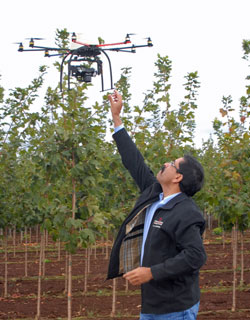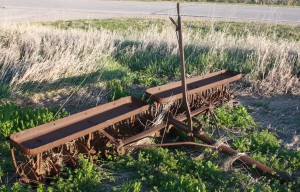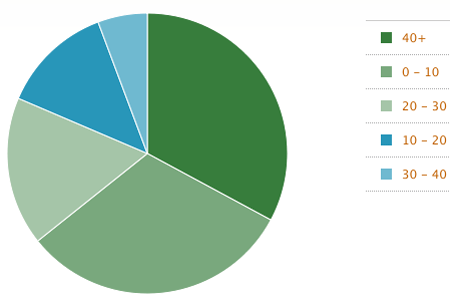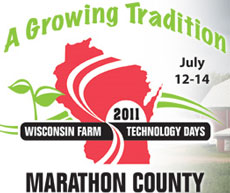Look up in the sky! It’s a bird! It’s a plane! No, it’s a Multi-Rotor Remote Sensing System!
 Somehow Multi-Rotor Remote Sensing System (MRRSS) just doesn’t have quite the same ring as Superman, but these tiny remote-controlled, camera-equipped drones could give some farmers super powers to see their crops from a bird’s eye view. University researchers from Arkansas, Florida and Ohio are currently studying the applications of the system which consists of a six- to eight-rotor, remotely controlled helicopter that provides a stable platform for the off-the-shelf digital camera that sends back video and stills to the ground crew. The system includes image recognition software that can teach itself to recognize individual trees or plants and count them. With different sensors, the machine could potentially detect disease, irrigation or fertilizer issues, predict crop yields and more.
Somehow Multi-Rotor Remote Sensing System (MRRSS) just doesn’t have quite the same ring as Superman, but these tiny remote-controlled, camera-equipped drones could give some farmers super powers to see their crops from a bird’s eye view. University researchers from Arkansas, Florida and Ohio are currently studying the applications of the system which consists of a six- to eight-rotor, remotely controlled helicopter that provides a stable platform for the off-the-shelf digital camera that sends back video and stills to the ground crew. The system includes image recognition software that can teach itself to recognize individual trees or plants and count them. With different sensors, the machine could potentially detect disease, irrigation or fertilizer issues, predict crop yields and more.
The idea for the system came from Reza Ehsani, Assistant Professor and Precision Agriculture Specialist with the University of Florida’s Citrus Research and Education Center. It’s powered by a lithium ion polymer battery and a basic unit costs from $7,000 to $10,000. Ehsani says it would be a great tool for citrus growers to use to combat citrus greening.
Arkansas researchers are interested in how the system could help row crop farmers and the project in that state is being funded partially by the state soybean board. In Oregon, nurseries and tree farms have the most interest.


 As you are faced with trying to do more with less, efficiency is a frequently heard buzzword. But, learning about what products are on the market to help you increase field speed, reduce fuel costs and allow you to start earlier, run later and continue longer with less fatigue – now that’s a challenge in itself. And who has time, because you’re doing MORE with LESS!
As you are faced with trying to do more with less, efficiency is a frequently heard buzzword. But, learning about what products are on the market to help you increase field speed, reduce fuel costs and allow you to start earlier, run later and continue longer with less fatigue – now that’s a challenge in itself. And who has time, because you’re doing MORE with LESS!


 The Danforth Plant Science Center will host an international conference focused on agricultural innovation this month in St. Louis.
The Danforth Plant Science Center will host an international conference focused on agricultural innovation this month in St. Louis. The three-day outdoor event showcases the latest improvements in production agriculture, including many practical applications of recent research findings and technological developments. Each year, it is held in a different Wisconsin county – on a different host family farm. This year’s host is
The three-day outdoor event showcases the latest improvements in production agriculture, including many practical applications of recent research findings and technological developments. Each year, it is held in a different Wisconsin county – on a different host family farm. This year’s host is